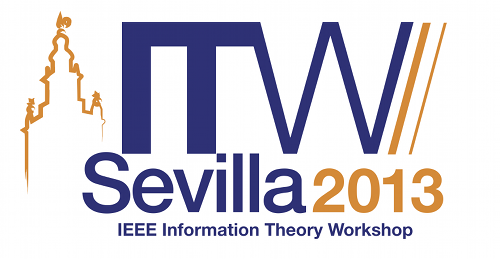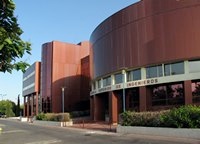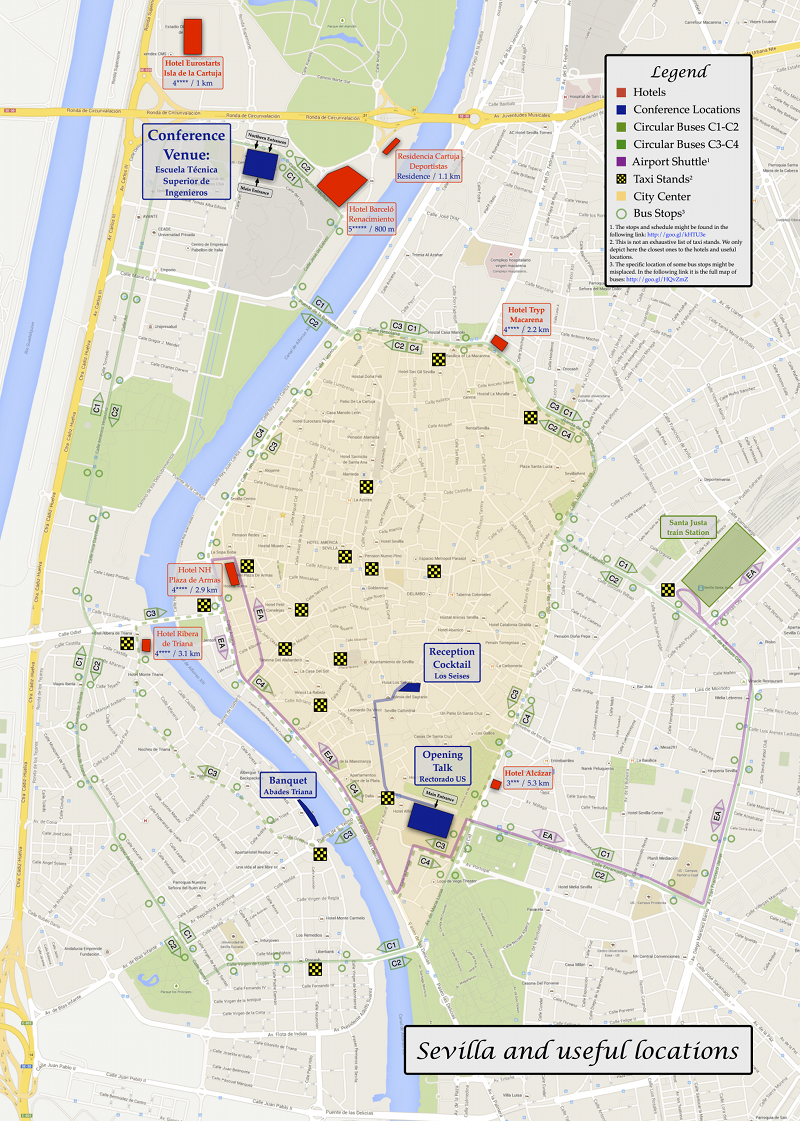You are here
Venue Information
ITW2013 will be held in the School of Engineering of the University of Seville, Seville, Spain, in September 2013.
The School of Engineering is located on the Isla de La Cartuja in one of the buildings used for Seville’s World’s Fair (Pavilion of the Americas) of 1992.
It is located in front of the Olympic Stadium of Seville, and next to the Parque Temático Isla Mágica, about thirty minutes walking from the center of Seville, entering from the Puente de la Barqueta.
How to get Seville:
You may either fly from any place to Seville, or try to fly to Malaga or Madrid and then reach Seville by train. There is a connection from airport to train station in Madrid and Malaga by commuter train. In Madrid Airport you have also underground, but commuter train -departing from T4 terminal- is recommended.
Once in Seville:
From the airport: There is not underground or commuter to the city. You can take a taxi (check the recommended taxi fares in the follow LINK). Also you can take a bus to the bus station in "Plaza de Armas" (the fare is 4€ single trip or 6€ round-trip).
From Santa Justa train station: Underground, taxi or bus to the hotels are available.
How to get ITW2013:
By bus: the bus lines that pass by the school are: C1 and C2. These bus lines can be taken from several city routes and both go through the Santa Justa train station where the AVE (high-speed train from Madrid) has its final stop. Santa Justa is a 25-minute drive from Seville’s San Pablo Airport.
By car: take the SE-30 which crosses the Puente del Alamillo (Alamillo Bridge), and leads directly to the School.
INFORMATION ABOUT SEVILLE
Seville (Sevilla) is located in the south of Spain, Europe. It is one of Spain's major cities and is also the capital of the Andalusia region. With an enormous amount to offer both the tourist and business traveller, Seville is a friendly and captivating place to visit. The city centre is pedestrian and many of the best attractions are within easy walking distance.
The city on the shores of the Guadalquivir River is universal renown by its history, culture and gastronomy. Central Seville comprises an abundance of twisting streets and narrow lanes, adding much character to the city. Most public squares feel rather small and intimate. It is one of the largest historical centers in Europe. Seville offers much for the visitor to explore from the Moors to the Baroque period. You can also enjoy the Seville nightlife and its famous gastronomy.
A little bit of history:
The passage of the various civilizations, instrumental in its growth, has left the city a distinct personality, and a large and well-preserved historical centre. Although it has a strong medieval, renaissance and baroque heritage, the city received heavy influences from Arabic culture, which can be seen in the most famous monuments and places.
The Romans founded Hispalis in 206 BC, which had formerly been occupied by the Tartessions. It was an important capital of the Roman Empire. The early 8th century marked the arrival of Moorish occupiers. Under Moorish control, Sevilla came to be known as Isbiliya.
Seville also flourished with the discovery of the New World. The city was the center of the American commerce with the Spanish empire.
In the early and last years of the twentieth century, Seville was marked by two universal expositions (1929 and 1992). In 1992, the successful World’s Fair saw the development of modern Seville, with the development of the Cartuja Island, as well as many public works and improvements to the city’s infrastructure.
MORE LOCAL INFORMATION


